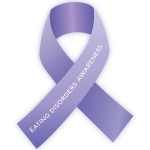
Anorexia Nervosa: Symptoms of anorexia can be hard to notice because people with this condition can be very good at hiding their eating disorder behaviors. They may take small bites, organize their food, or “pick” at food when they eat. They often avoid eating around others to hide their behavior or because it causes anxiety.
Some of the signs of anorexia nervosa are:
Physical:
- Brittle nails
- Constant tiredness
- Constipation (trouble having regular and soft bowel movements)
- Dehydration (not enough fluids in the body)
- Dizziness
- Dramatic weight loss
- Dry skin
- Extreme thinness
- Growth of lanugo (soft furry hair) on face, back, and arms
- Hair loss
- Low blood pressure and irregular heartbeat
- Orangey color to the skin
- Paleness
- Poor concentration
- Sensitivity to cold
- Slow heart rate
- Slow or stunted growth
- Swelling of legs, feet, or ankles
- Weak bones (that can lead to fracture and osteoporosis)
Emotional:
- Anxiety or nervousness
- Denial of a problem
- Depression
- Distorted body image (believes their body looks different than it actual does)
- Fear of weight gain
- Irritability
- Lack of emotion
- Low self-esteem
- Obsession with food
- Perfectionism
- Withdrawal from friends and activities
Bulimia Nervosa: Most of the time, you can’t really tell if someone has bulimia just by looking at them because many of the symptoms aren’t as obvious as with anorexia nervosa. People with bulimia can be average weight and often hide their eating habits and behaviors so friends and family won’t always notice there’s a problem.
Some of the signs of bulimia nervosa are:
Physical:
- Constipation (trouble having regular and soft bowel movements)
- Dehydration (not enough fluids in the body)
- Dry, flaky skin
- Electrolyte problems (not the right balance of the fluids in the body)
- Irregular heartbeat (caused by low potassium levels)
- Irregular periods
- Sore throat
- Swollen face (from extra fluid in the body or enlarged salivary glands)
- Tooth decay/loss (cavities, loose teeth)
- Weight fluctuations (weight loss and gain)
Emotional:
- Anger that is hard to control
- Denial of a problem
- Depression or anxiety
- Distorted body image (believes that their body looks different than it actually does)
- Fear of weight gain
- Impulsivity
- Intense focus on “flaws” and physical appearance
- Shame or guilt
- Withdrawal from friends
Binge Eating Disorder: Most of the physical signs of binge eating disorder are related to overeating and the obesity that may develop. Binge eating disorder is very different from obesity, though, because the loss of control that happens in binge eating disorder can lead to significant emotional distress.
Some of the signs of binge eating disorder are:
Physical:
- Gallbladder disease
- High blood pressure and cholesterol levels
- Insulin resistance
- Joint pain
- Type II Diabetes
- Weight gain
Emotional:
- Anxiety
- Depression
- Shame, loneliness, and self-hatred
- Withdrawal from friends
What happens when a person doesn’t eat?
Our bodies use food as fuel to keep all the important organs and cells running well. When a person doesn’t eat, their body doesn’t get the fuel it needs and then organs and body parts can suffer.
Heart & Circulation: The heart is a muscle that can shrink and weaken when a person doesn’t eat. This can create circulation problems and an irregular or very slow heartbeat. Blood pressure can get very low during starvation and a person may feel dizzy when they stand up.
Stomach: The stomach becomes smaller when a person doesn’t eat so when they start eating again, the stomach will likely feel uncomfortable (stomach aches and/or gas). Also, the stomach will not empty as fast, making a person feel full longer.
Intestines: The intestines will move food slowly often resulting in constipation (trouble having a bowel movement) and/or stomach aches or cramps when eating meals.
Brain: The brain, which controls the rest of the body’s functions, does not work properly without food. For example, a person may have trouble thinking clearly or paying attention. They could also feel anxious and sad.
Body Cells: The balance of electrolytes in the blood can be changed with malnutrition or with purging. Without food, the amount of potassium and phosphorous can get dangerously low which can cause problems with muscles and brain functioning. Low potassium or phosphorus can also cause life-threatening heart rhythm problems.
Bones: When a person doesn’t eat, their bones often become weak due to low calcium and low hormone levels, which increases the risk of breaking a bone now (like a stress fracture) and developing weak bones as someone ages.
Body Temperature: The body naturally lowers its temperature in times of starvation to conserve energy and protect vital organs. When this happens, there is a decrease in circulation (blood flow) to fingers and toes which will often cause hands and feet to feel cold and look bluish.
Skin: Skin becomes dry when the body is not well hydrated and when it does not get enough vitamins and minerals from food. The skin will naturally protect the body during periods of starvation by developing fine, soft hair called “lanugo” that covers the skin to keep the body warm.
Hair: When hair doesn’t get enough nourishment from the vitamins and minerals that are naturally found in food, it becomes dry, thin, and it can even fall out.
Nails: Nails require nutrients in the form of vitamins and minerals from the diet. When a person doesn’t eat, nails become dry, brittle, and break easily.
Teeth: Teeth need vitamin D and calcium from food sources. Without vitamin D and calcium, a person can end up with dental problems such as tooth decay and gum disease. Purging can also destroy tooth enamel.
 Young Men's Health
Young Men's Health


